Toyin Ojih Odutola: A Countervailing Theory – Barbican, London
My first foray into the Barbican Curve yields a resolutely futuristic ancient mythology from Nigerian-American artist Toyin Ojih Odutola.
Toyin Ojih Odutola at the Barbican Curve
This exhibition is totally different than anything else I saw in 2020. Both in terms of the medium and the works themselves, but also in terms of the concept and execution. It was my first visit to the Barbican Curve, and coincided with my excursion to Michael Clark: Cosmic Dancer. But actually I had been wanting to see A Countervailing Theory by Toyin Ojih Odutola for a while. I was therefore glad to snap up a free timed ticket just as the UK prepared for its second lockdown.
I’ve written elsewhere about how well the Barbican is managing its Covid measures. This exhibition was slightly different in that it relies a bit more on self-distancing within the space. But it was still a smooth process and so a good thing to see once it reopens [Edit: rather if it reopens…] if you are out and about the City of London.
So just what is this interesting concept? Well in a nutshell, A Countervailing Theory is a series of 40 drawings by Nigerian-American artist Toyin Ojih Odutola. It constitutes her first UK exhibition. The drawings depict an imagined ancient civilisation from the Plateau State in Nigeria, ruled by women. Men and women (identifiable by different marks on their heads but in the mythology divided by language, culture and genesis) are forbidden from forming relationships with the opposite sex.
A Myth Presented As Reality
There is something of a narrative arc which follows a man and a woman who form a close friendship, transgressing cultural norms. But viewers must piece this together from what they glean from each work. Or from titles provided on a handout and in a couple of panels along the back wall. Actually I would recommend watching this video before visiting the exhibition; the artist’s explanation of her work gave me new insights I hadn’t found on my own. Particularly around the richness of the invented mythology; Ojih Odutola explains both how the mythology works, and why and how she created it.
At the very end of the exhibition is a text which both elucidates and confuses the viewer. It provides an additional explanation, but one set in the mythology of the series. In it, Ojih Odutola presents herself as the Director of the Jos Plateau Research Initiative, University of Ibadan. This fictional Ojih Odutola states that she has analysed and presented images found on large black shale sheets unearthed in a mining test by a private Chinese investment company. This complicating and submerging of her own authorship of the works and the meaning of the series is interesting. Does a pseudo-scientific origin lend credence to the messages she is conveying? Or is it designed to stimulate the viewer’s rational rather than artistic mind?
What Is ‘A Countervailing Theory’?
In any case this explanatory panel, even if presented by an alter-ego, leads us firmly back to the series title. The idea of countervailing power or countervailance is a political or economic concept. In the artist’s own words, it is “…to offset the effect of something by introducing another thing of equal force to counter it.” In Ojih Odutola’s work, this countervailing theory may refer to the challenging of typical colonial and post-colonial narratives with the ‘unearthing’ of an advanced civilisation. Or perhaps to the gender roles within that civilisation which balance male and female as two separate yet complementary forces. Or both.
In the explanatory text described above, Ojih Odutola as Director of the Jos Plateau Research Initiative writes:
“…we see the potential in these artefacts to provide a more balanced, expanding narrative, challenging known empirical and historical records of the biodiversity and multiculturalism native to central Nigeria.”
Whether we consider the countervailance to be one of gender politics or one of historical narrative, Ojih Odutola is certainly challenging us as viewers to overcome our preconceived ideas about where and how power is concentrated and constructed.
Artworks and Soundscape
The works themselves are very interesting. They are all either on board or on linen mounted on panel and vary in size. It is somewhat surprising to see large finished works use techniques and media generally more commonly seen in smaller-scale drawings: charcoal, chalk and pastel. All images are white on a black background (the ‘black shale’ of the explanatory panel). Ojih Odutola handles the materials masterfully – the works are very impressive. And the difference between lifelike skin textures and more geometrically-depicted backgrounds made me think of ancient cultures and their visual languages.
The works are arranged in order along the wall of the Curve space with dramatic lighting. An accompanying soundscape by Ghanaian-British artist Peter Adjaye blends classical, natural, futuristic and traditional West African sounds into an immersive backdrop. It found it interesting that many of the individual images are already in private and institutional collections as far afield as the US, Germany and United Arab Emirates (I gleaned this from the panels listing the works). This makes it a unique opportunity to experience the works as a single storytelling whole, rather than individual fragments.
Final Thoughts on Toyin Ojih Odutola at the Barbican Curve
If you want to see something different and challenging and thought-provoking, there is not much better on now in London than A Countervailing Theory. It’s good for us all to challenge our unconscious biases, and what better than a slick, visually impressive and also free exhibition to help us on our way?
If it is unable to reopen, or if you are not able to visit, I would also recommend this walkthrough of the exhibition, narrated by Toyin Ojih Odutola herself.
Salterton Arts Review’s rating: 4/5
A Countervailing Theory until 24 January 2021 (subject to change, check website for details)
If you see this after your page is loaded completely, leafletJS files are missing.

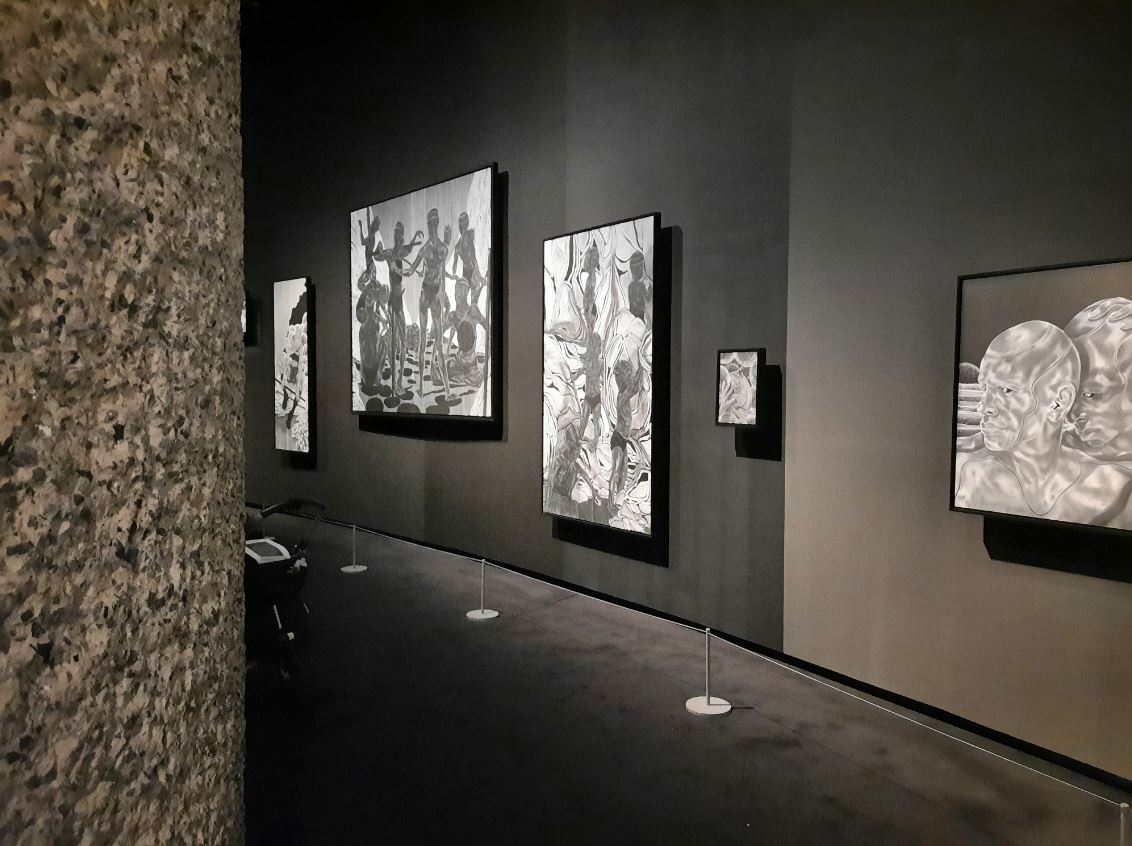
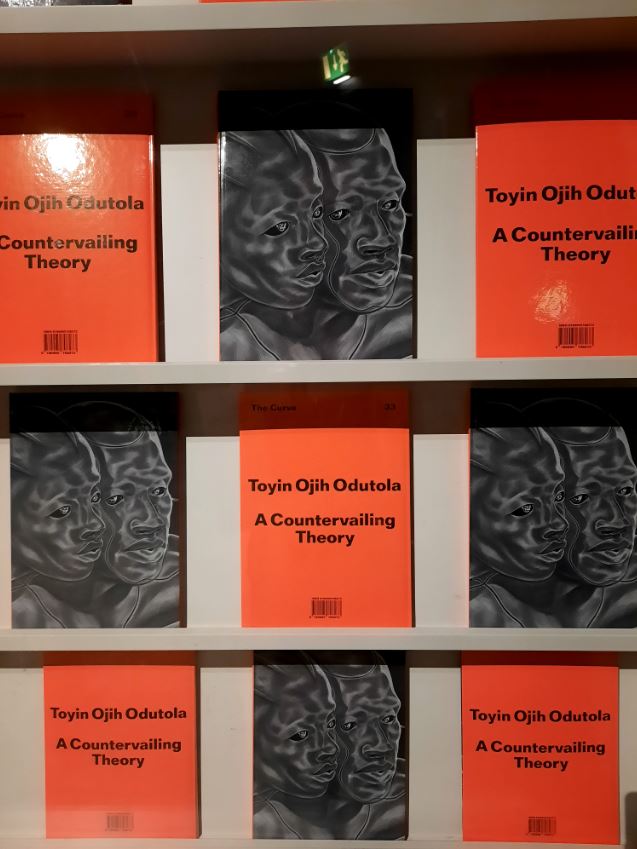



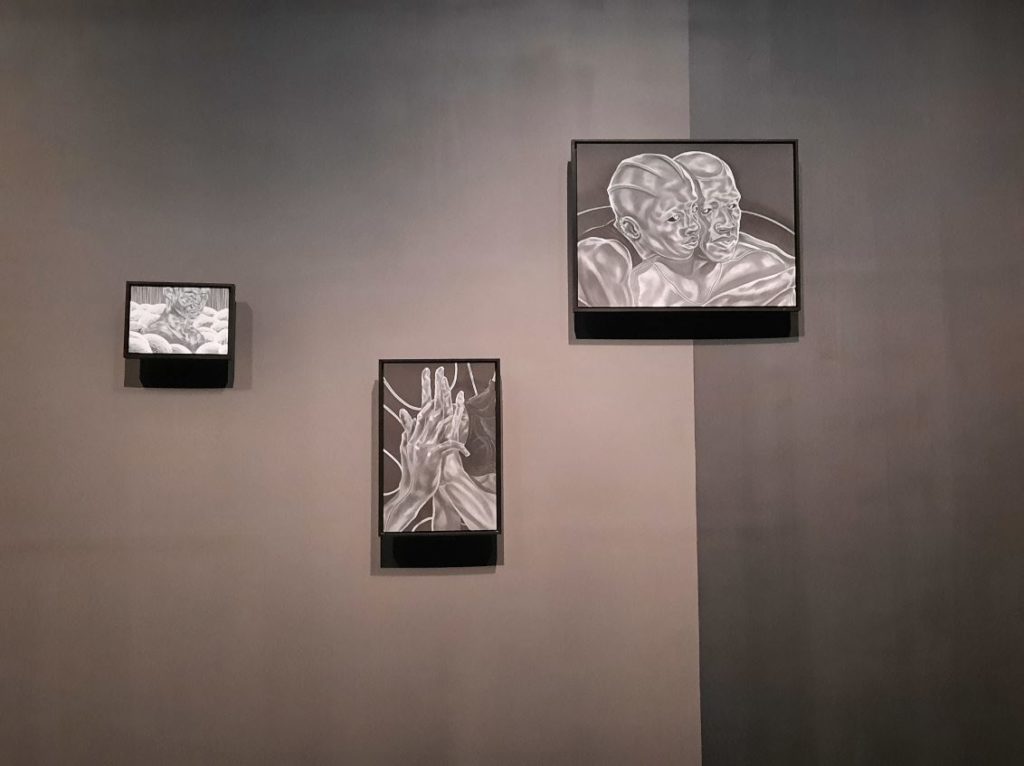

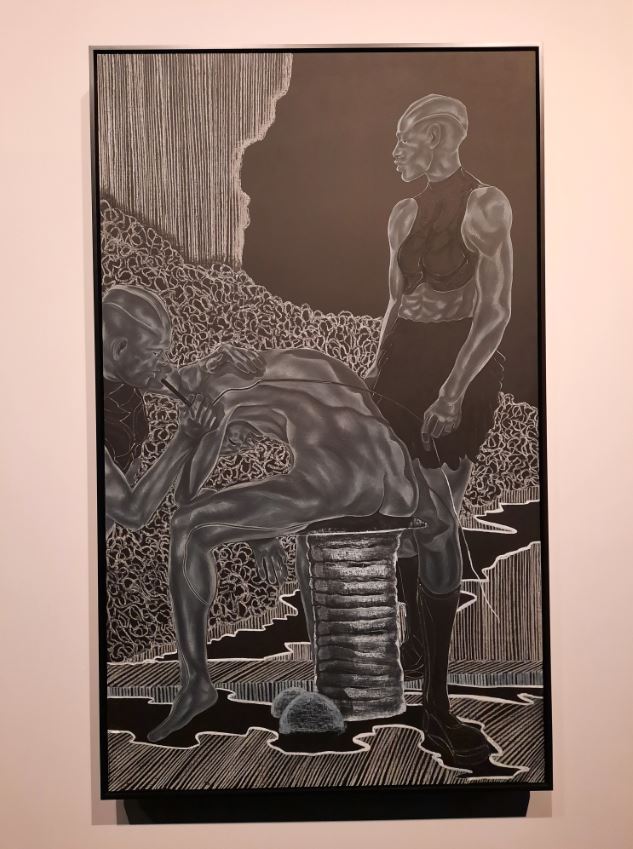
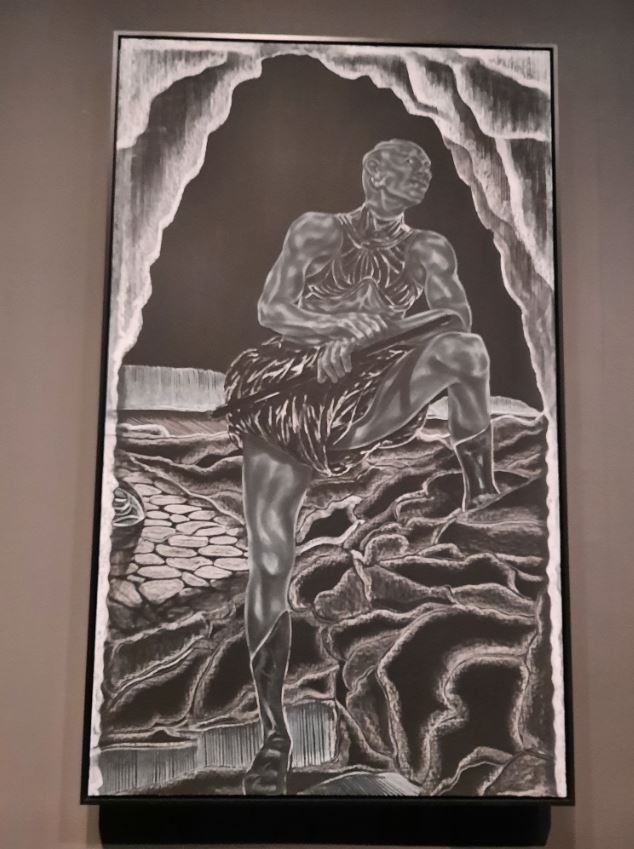
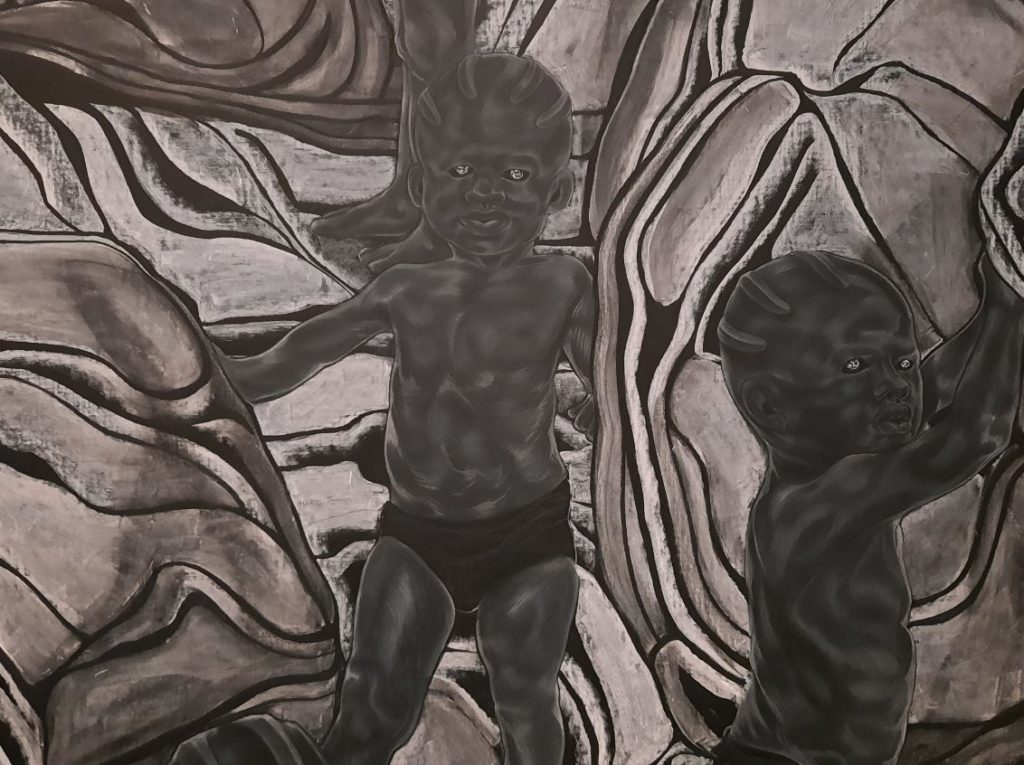
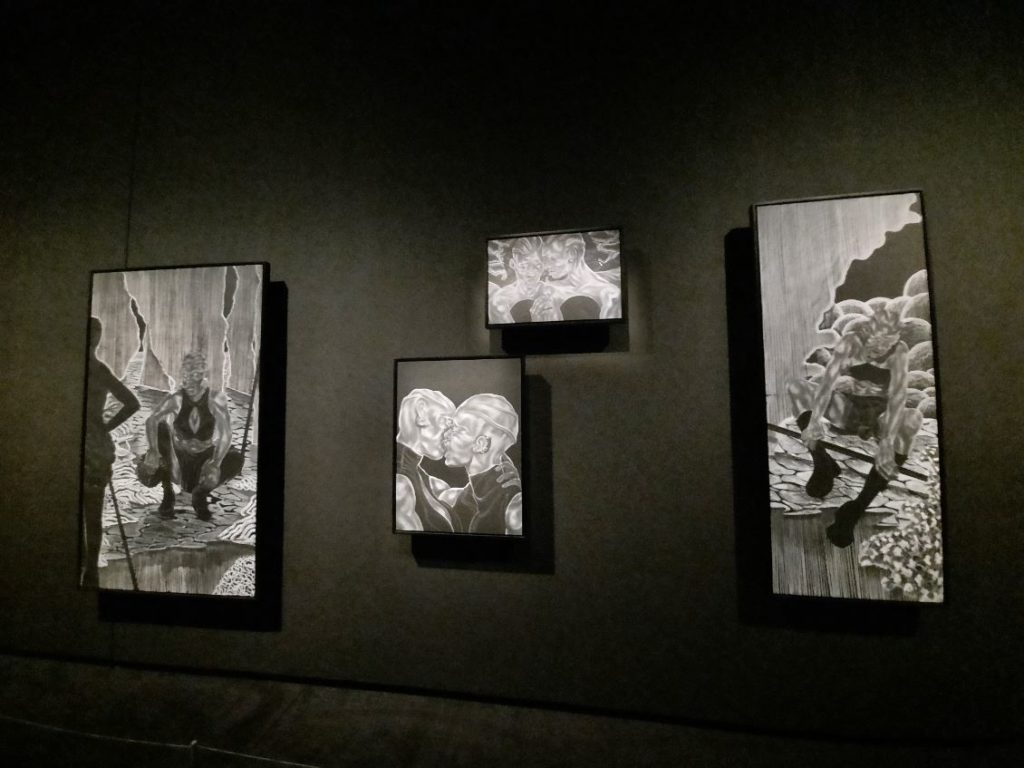
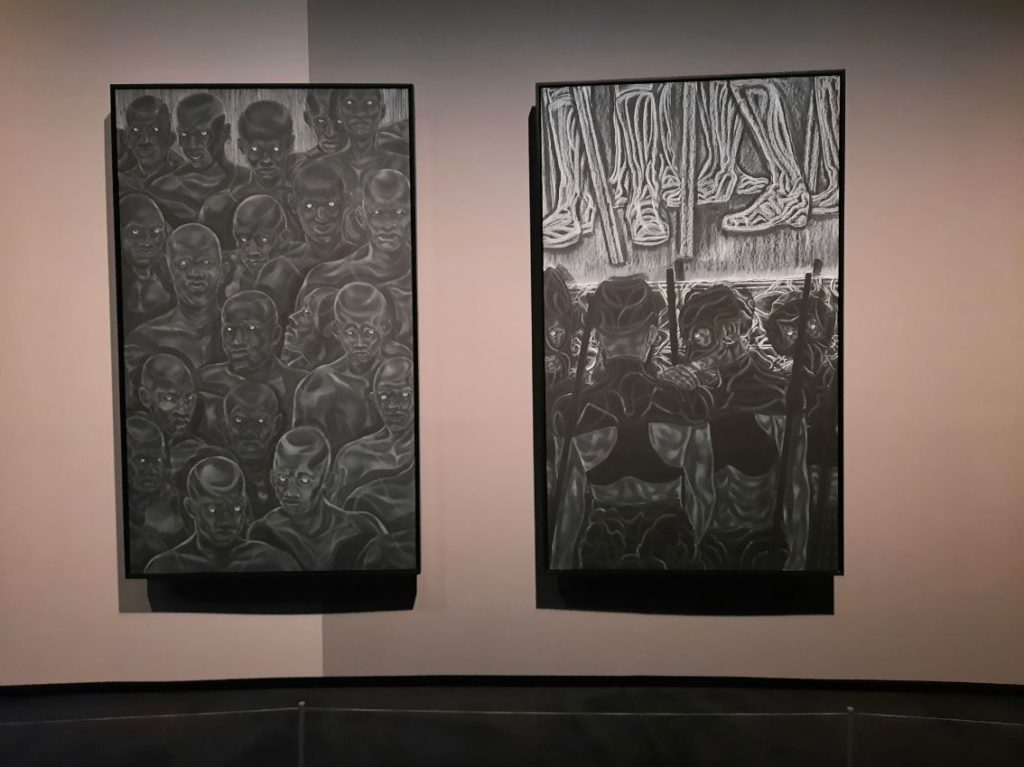



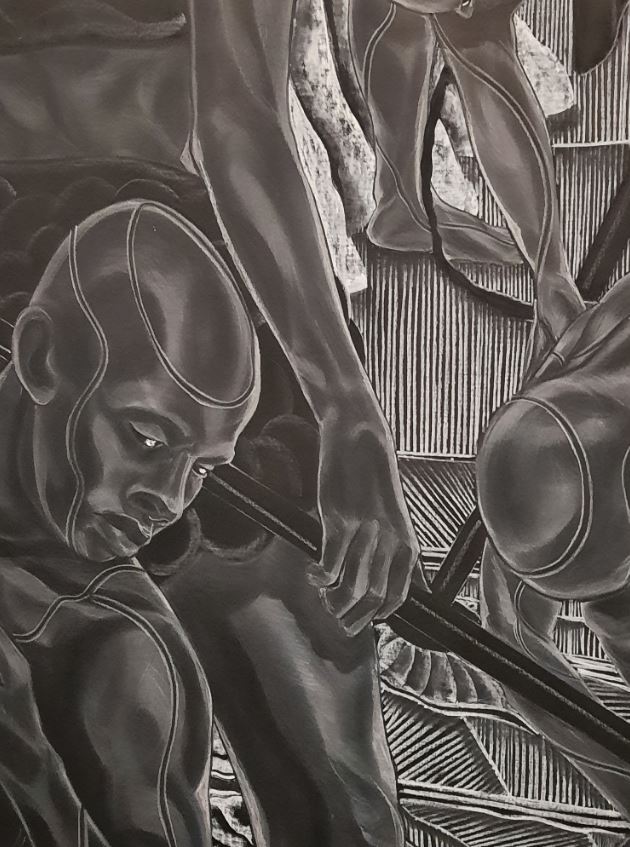
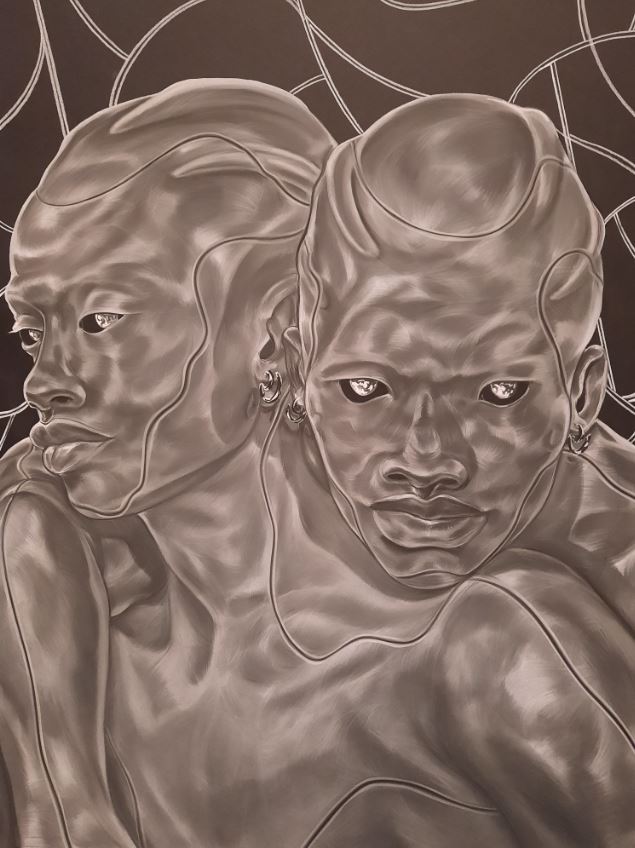

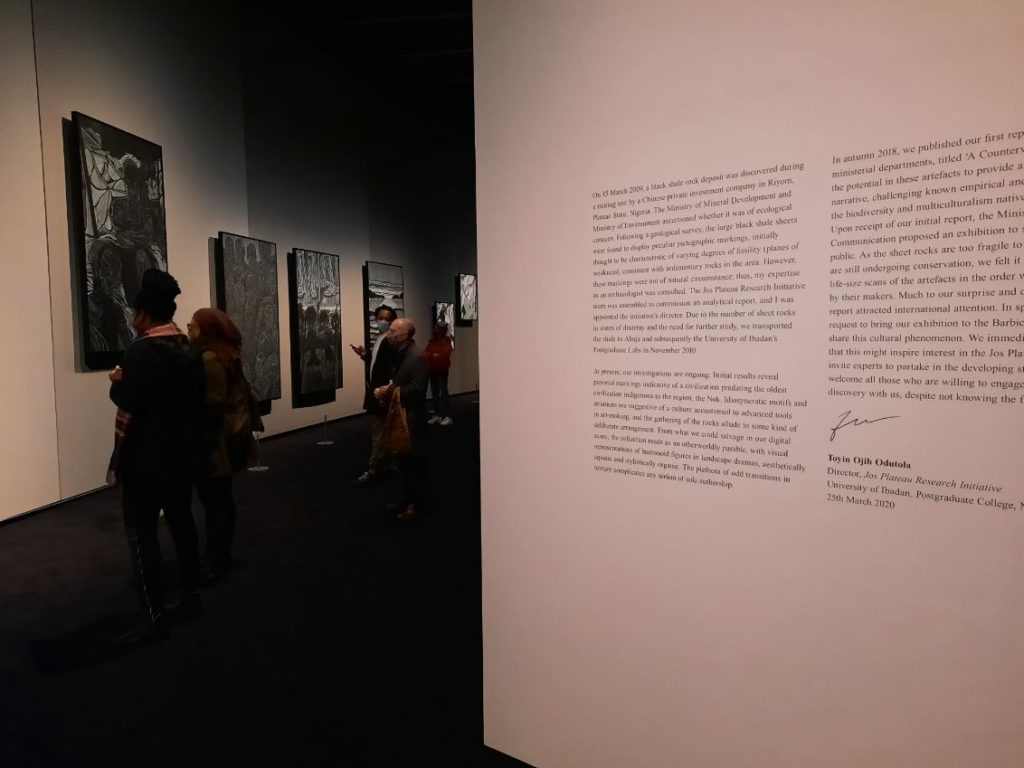
5 thoughts on “Toyin Ojih Odutola: A Countervailing Theory – Barbican, London”